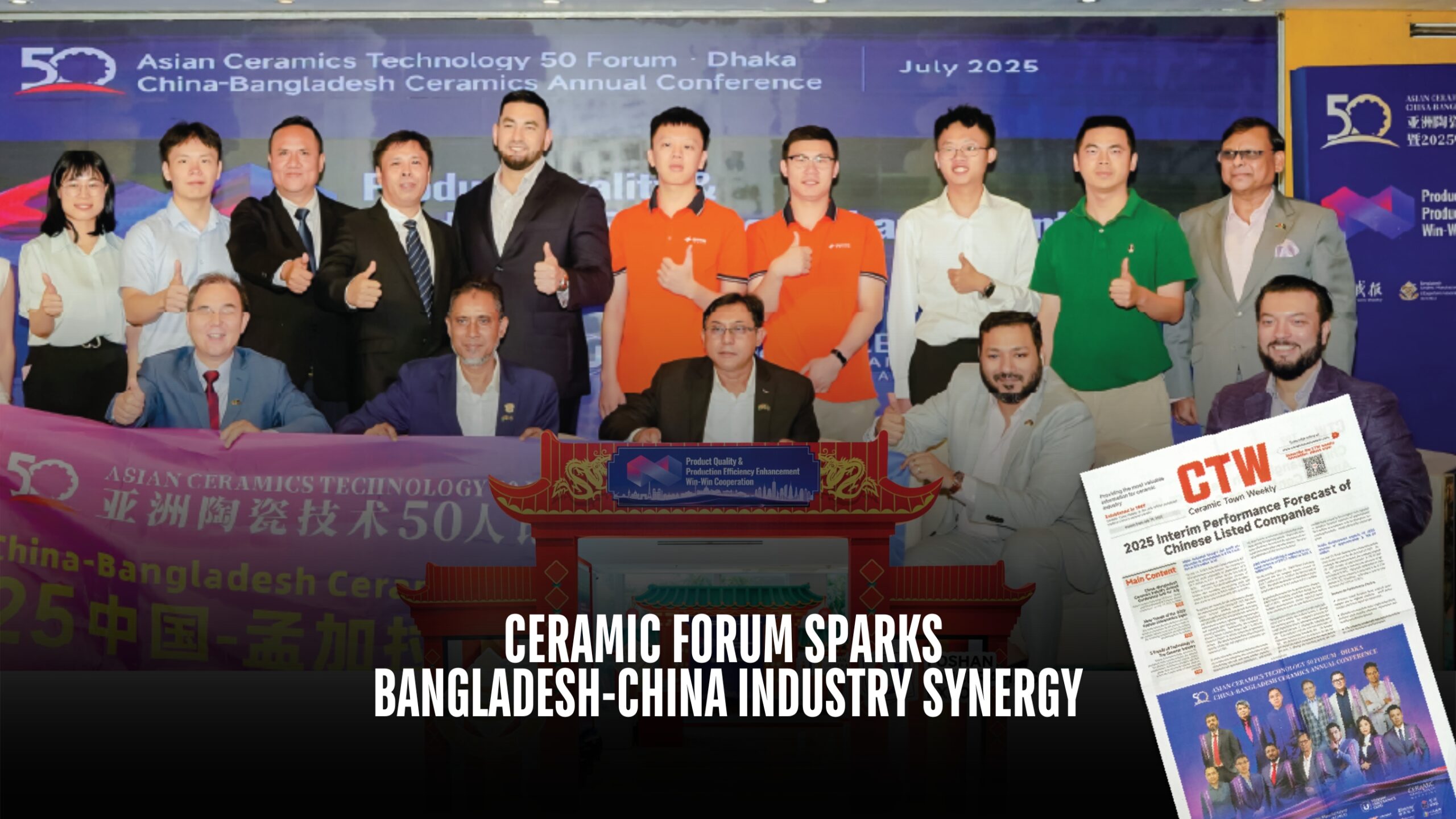
In mid-July, Dhaka hosted the Asian Ceramics Technology 50 Forum at Hotel Amari’s Eden Grand Ballroom, marking a pivotal moment for Bangladesh’s ceramic industry.
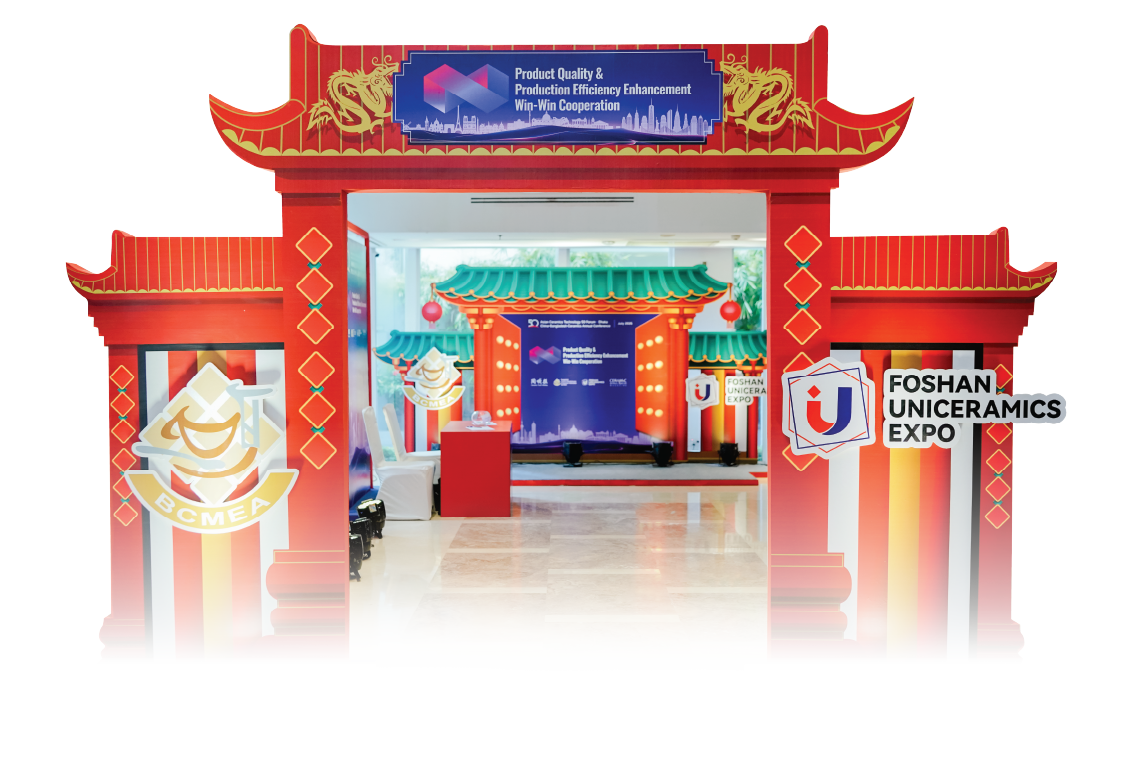
The event gathered leaders from Bangladesh and China to explore innovation, efficiency, and cross-border collaboration under the theme “Product Quality & Production Efficiency Enhancement and Investment Opportunities in Bangladesh – Win-Win Cooperation.”
Delivering the welcome address, Irfan Uddin, general secretary of the Bangladesh Ceramic Manufacturers and Exporters Association (BCMEA), emphasised knowledge-sharing and sustainable growth.
Praising China’s global leadership in ceramics, he said their participation reflected a shared commitment to regional cooperation.
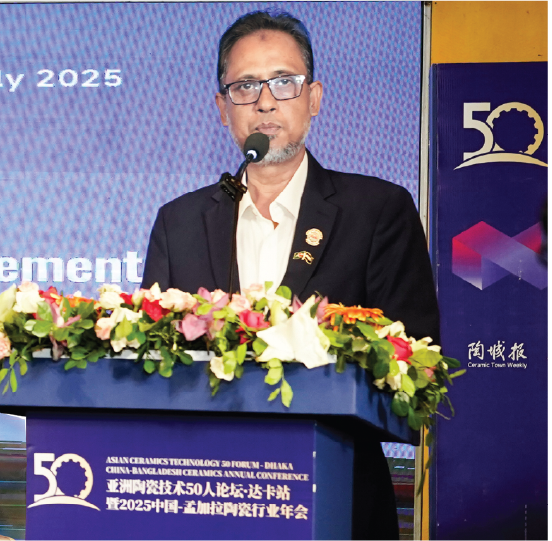
Chief guest Md Mamunur Rashid FCMA, acting BCMEA president and additional managing director of X Ceramic Group, highlighted the forum’s role in strengthening Bangladesh-China ties through joint ventures, technology transfer, and strategic investment.
“Forums like this serve as a powerful platform for dialogue, innovation, and mutual growth,” he said, citing supportive government policies.
The first technical session, chaired by Mohd Ziaul Hoque Zico, director of BCMEA and CEO of Hua Thai Ceramics, focused on quality and efficiency.
Speakers included consultant Engr. Sadat H. Talukder and Luo Fei of Foshan Uniceramics Development. Discussants Saidur Rahman Khan of Akij Ceramics and Yang Shuilan of Foshan Lang Kun Electromechanical added insights.
Yang noted rising consumer demand and costs, stressing that “quality and efficiency are not trade-offs but the double-helix genes of survival,” citing intelligent kiln control and AI visual inspection.
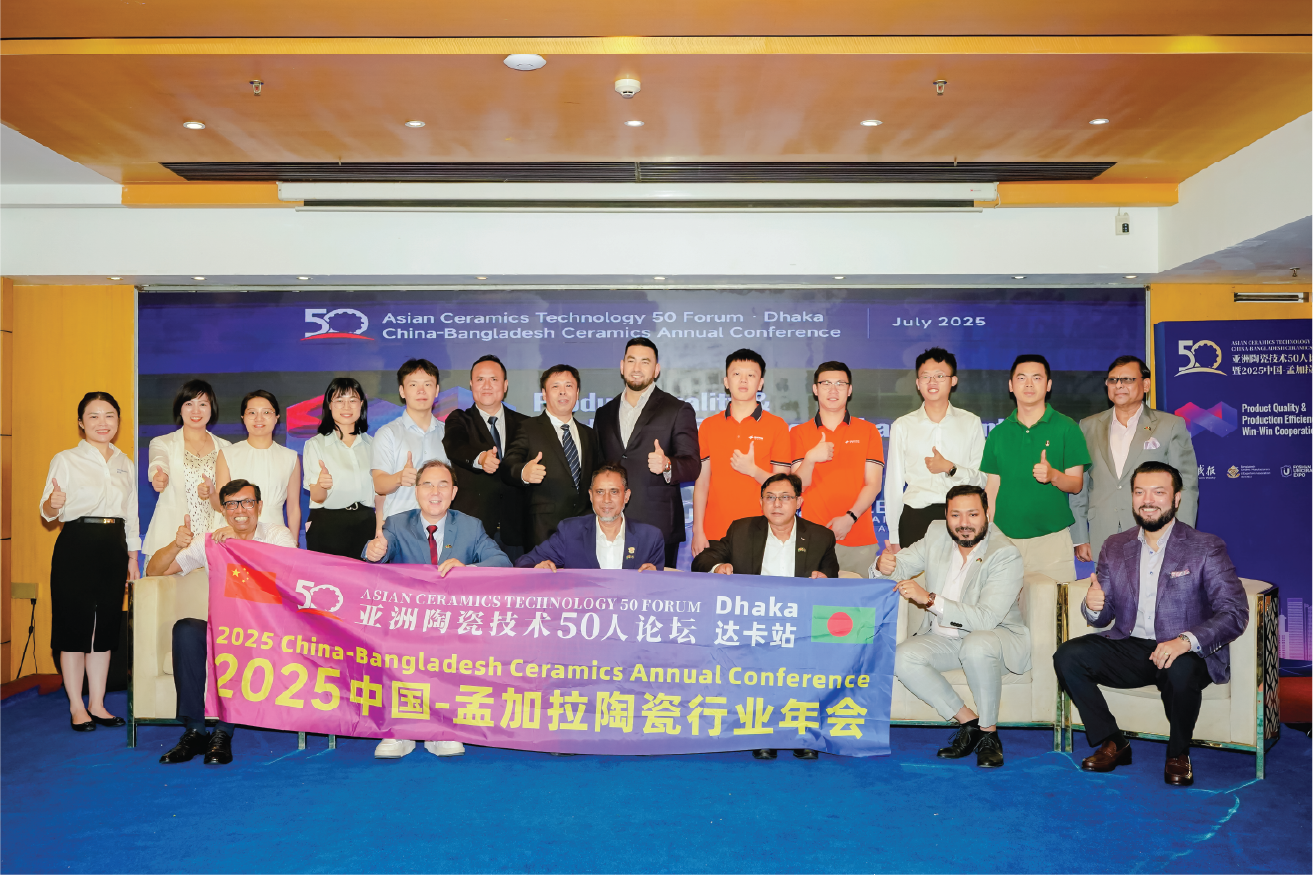
Talukder pointed out Bangladesh’s low global market share—0.48% in tableware, 0.005% in sanitary ware, and 0.001% in tiles—despite resources, urging advanced kiln technologies, solar integration, and skill development.
Khan said quality depends on customer satisfaction, warning that internal and external failures drive up costs, making productivity gains essential.
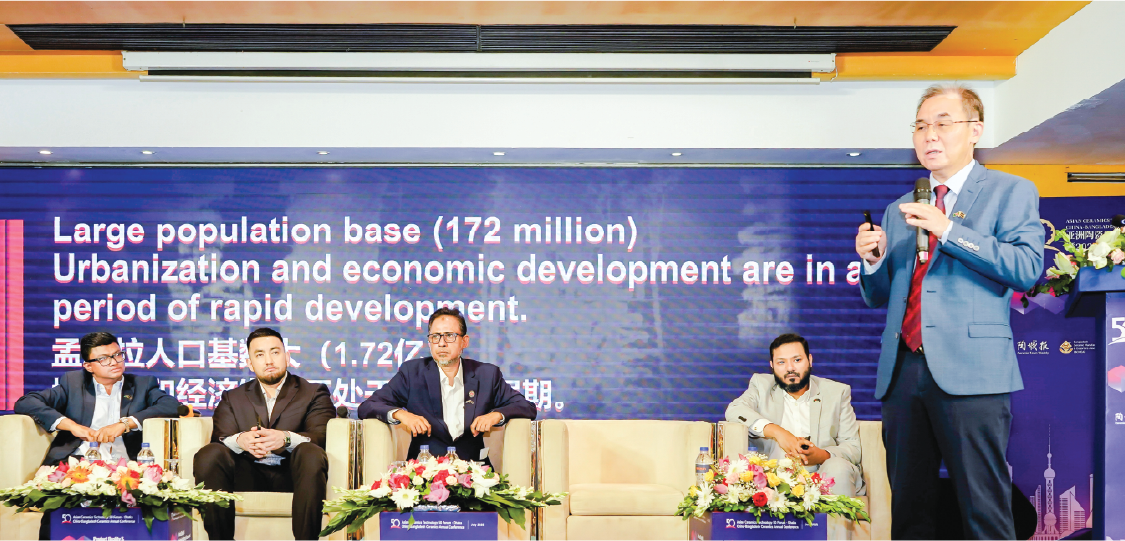
The second session, chaired by Mahin Bin Mazher, adviser to BCMEA and MD of X Ceramic, explored cost reduction and tile performance.
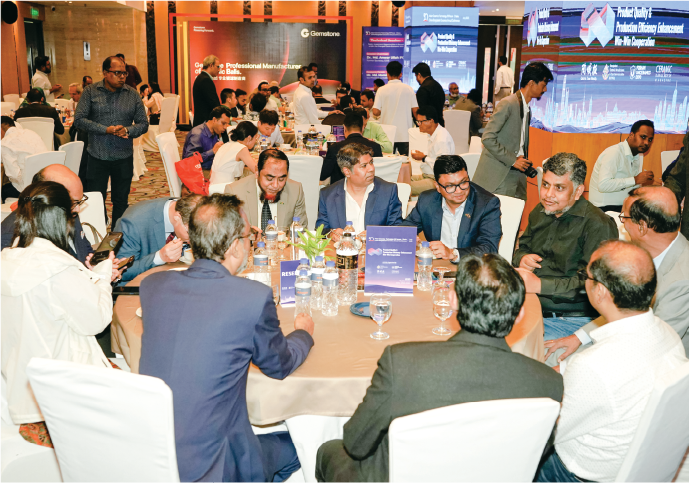
Mohammad Bayazed Bashar of DBL Ceramics proposed using locally sourced liquid sodium silicate to cut costs by 50%.
He showcased DBL’s zero-waste strategy and cogeneration initiatives that saved 18.8 million standard cubic metre of gas—worth $1.2 million—with pilots targeting net-zero emissions by 2030.
Liu Zhanjie of Foshan Uniceramics noted Bangladesh’s rising output. In 2023, the country produced 280 million square metre of tiles and 16 million sanitary ware pieces, with per capita tile consumption at 1.65 sqm—far below China’s 6.9 sqm in 2017
He projected tile output could reach 700–840 million sqm and sanitary ware 40–48 million pieces in a decade.
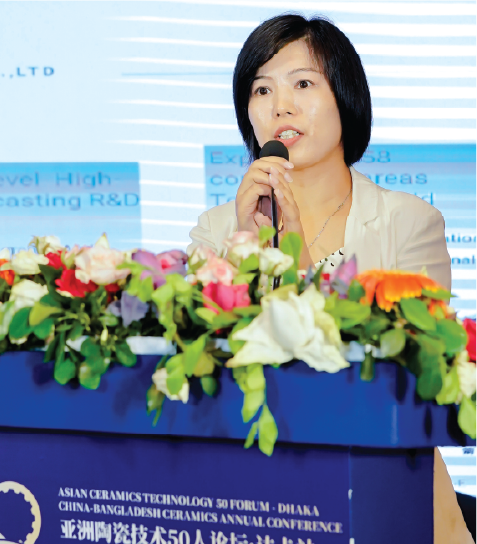
AKM Ziaul Islam of Meghna Ceramic stressed lowering costs and boosting efficiency, citing the sector’s evolution since 1984 and labour advantages.
Sun Bowen of Zibo Huayan detailed high-strength ceramic rollers and shuttle kiln technology, with 1.5 million-piece annual capacity.
The final session, chaired by Dr Md Anwar Ullah FCMA, featured Md Mominul Haque of LankaBangla Investments, who cited GDP growth of 3.8–3.97%, inflation easing to 8.48%, and reserves rebounding to $31 billion.
He noted Bangladesh’s emergence as the 9th largest consumer market by 2030. Muhammad Nazrul Islam of Sandhani Life Finance urged foreign investment, citing high dividend yields.
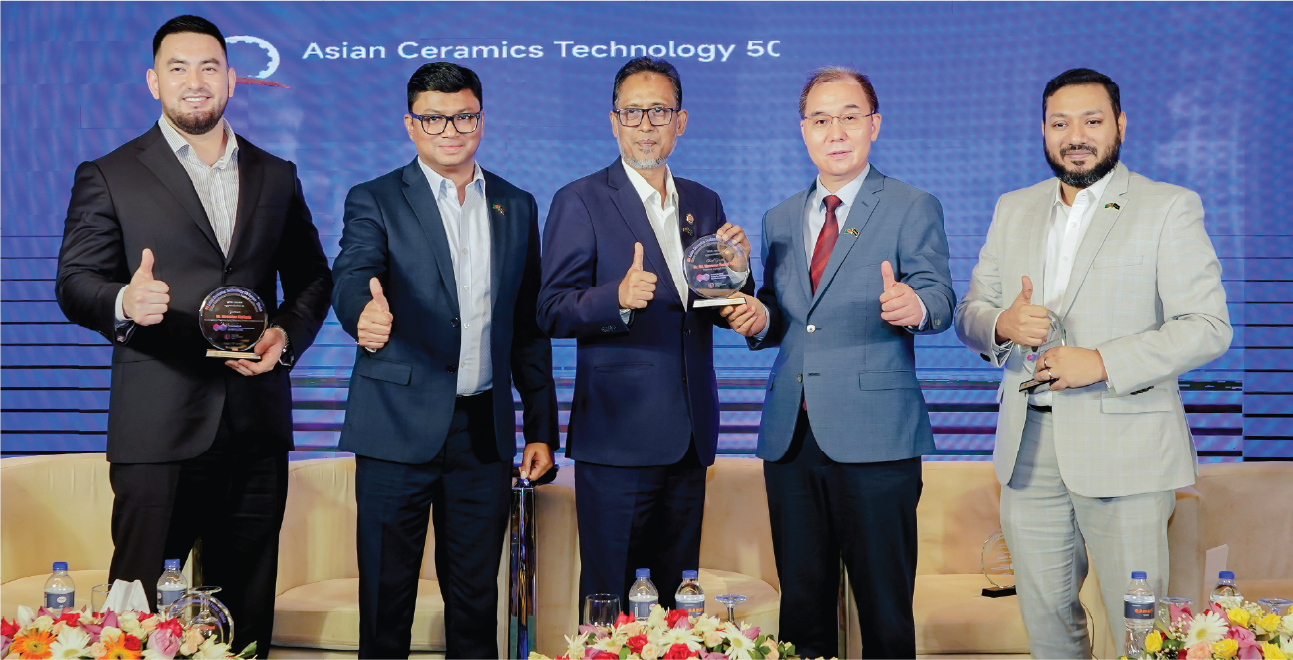
Joanna Sun of Tangshan Hexiang highlighted sanitary ware expertise and 536 patents, including 37 inventions.
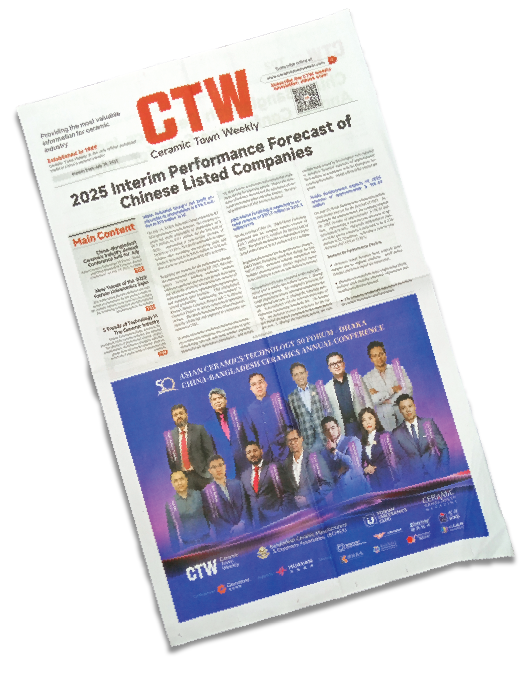
The forum concluded with a shared vision: Bangladesh-China cooperation can drive innovation, reduce costs, and elevate Bangladesh’s ceramics industry to global prominence.
Photo: Courtesy
Written by Sajibur Rahman




